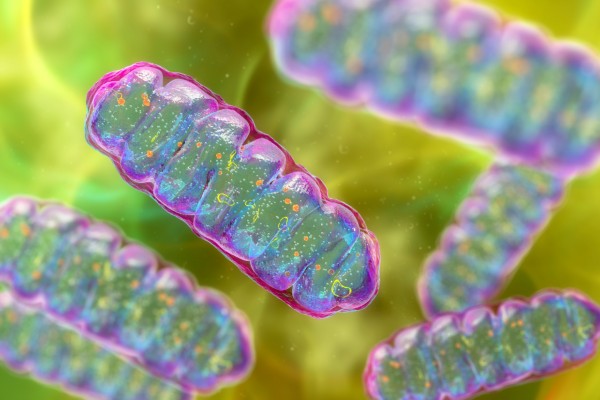Jefferson Investigates: Treatment for Spinal Cord Injury, Automated Nutrition Guidance for Cancer Patients & a New Molecular Signature for Breast Cancer
Electrical stimulation for spinal cord injury; artificial intelligence to help cancer patients eat healthy; the role of proteoglycans in breast cancer.
Personalized Electrical Therapies Could Transform Spinal Cord Injury Treatment
There are over 15 million people living with spinal cord injury (SCI) worldwide. Experimental treatments using electrical stimulation through the skin may help some patients regain movement, but researchers still have a lot to learn.
“One of the biggest challenges is figuring out the right “recipe” for each person—like how strong the current should be, what kind of signal to use, how often to deliver it, and more,” says Shirin Madarshahian, PhD, a data scientist at Thomas Jefferson University’s Raphael Center for Neurorestoration, and the lead author of a new study that aims to personalize spinal cord stimulation. The research, published in Bioengineering, finds that adjusting the location, amount, and type of electrical stimulation makes a big difference in outcomes for SCI patients.
The researchers investigated transcutaneous spinal cord stimulation (tSCS), whereby an external device delivers electrical current through the skin and into the spinal cord. The effectiveness of the therapy can be assessed by measuring the electrical response in the affected muscle.
“The goal is to help ‘wake up’ the spinal cord by stimulating the nerves and encouraging the brain and body to reconnect,” Dr. Madarshahian explains.
Past studies using tSCS have taken a one-size-fits-all approach, using the same electrode location and type of stimulation for every person. But in a small group of five participants, this study found that personalized configurations of the tSCS devices helped elicit more electrical responses in the muscles responsible for movement. And in some individuals, certain configurations even modulated blood pressure and reduced pain.
“What we're seeing is that you do need that personalization phase,” explains Alessandro Napoli, PhD, lead engineer and co-author on the paper. “Each person is different, especially after an injury.”
Mijail D. Serruya, MD, PhD, Director of the Center for Neurorestoration and the senior author on the paper, hopes that this research can not only inform treatment for SCI, but for other movement disorders as well. “It’s a rising tide,” says Dr. Serruya, who is also a member of Sidney Kimmel Medical College.
By Marilyn Perkins
Automated,Customized Nutrition Advice for Cancer Patients
Research shows that good nutrition can contribute to the overall health and well-being of cancer patients. However, personalized dietary advice can be hard to access and is not often covered by health insurance.
A research team from Thomas Jefferson University wondered if artificial intelligence (AI) bots might be able to close this gap in supportive care. In a new paper, they tested two widely available large language models (LLMs)—ChatGPT and Gemini— with a variety of prompts to generate meal plans and grocery lists for specific patient characteristics such as cancer stage and other health conditions, as well as budgets, geographic location, and cultural preferences.
The goal, says senior author and radiation oncologist at Sidney Kimmel Comprehensive Cancer Center Nicole Simone, MD, was to evaluate the LLMs capacity to address these varied needs, and compare the generated advice to that of clinical dietitians.
Medical student and first author, Julia Logan, tested the prompts for all the variables during her summer research stint in the department.
Co-author and computational physicist Wookjin Choi, PhD says it would be nearly impossible to build a specialized model from scratch. “The general LLMs provide a starting place, and then we develop it, score it, adjust it and create a new specialized model,” says Dr. Choi, who is a member of Sidney Kimmel Medical College.
The researchers were pleasantly surprised by the level of granularity the tools achieved, Dr. Simone adds. “It was able to figure out cost and nearby grocery stores with available ingredients.”
“The ability of LLMs to generate meal plans tailored to socioeconomic and cultural considerations is one of the most promising aspects of this approach,” the authors write. That means the tool can be helpful for people with financial constraints and promotes adherence by integrating ethnic food choices.
This study demonstrated the feasibility of creating an AI tool to generate and support dietary advice tailored to cancer patients. There’s more work to be done, such as identifying the limits of an AI tool’s reliability and when oversight by professional dietitians is needed.
By Jill Adams
The Family of Molecules That Could Help Diagnose — and Treat —Breast Cancer
Proteoglycans are large molecules that are important for tissues all over the body. For example, they play key roles in the development of cartilage and blood vessels, and they can also protect against inflammation and infection. But their role in cancer is less clear: while some proteoglycans protect against cancer, others can promote tumor growth.
Now, new research led by Thomas Jefferson University researcher Renato Iozzo, MD, characterizes a pattern of proteoglycans linked to breast cancer. The results could lead to more accurate diagnostics and form the basis for new cancer treatments.
“It’s the first comprehensive study on proteoglycans in breast cancer,” Dr. Iozzo says.
The study, published in Proteoglycan Research, analyzed genetic information from over 1,000 tumor tissue samples. Using a machine learning algorithm, the researchers identified two different groups of proteoglycans: one that was present at higher levels in tumors, and one that was present at lower levels. They also found these same proteoglycans were connected to prognosis and tumor aggressiveness. Proteoglycans that promoted cell growth tended to be associated with more aggressive tumors, whereas proteoglycans that inhibited growth were associated with less malignant tumors.
Dr. Iozzo hopes these patterns could be used to develop new tests to diagnose and provide accurate prognoses for breast cancer, ultimately resulting in better personalized treatments for cancer patients. Dr. Iozzo plans to investigate if the same proteoglycans can be used as biomarkers for other types of tumors, such as those in the skin, pancreas, or colon.
“It is absolutely fundamental to have better biomarkers for breast cancer,” Dr. Iozzo, a member of Sidney Medical College, says. “This is really the beginning.”
By clarifying the role of specific proteoglycans in breast cancer, this research also acts as a jumping-off point for new treatments. In this vein, Dr. Iozzo is in the initial stages of developing an injectable proteoglycan-based drug aimed at preventing cancer from metastasizing.
By Marilyn Perkins



